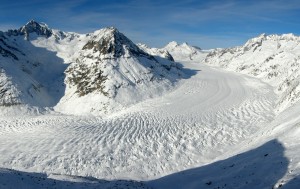TUESDAY, 16 OCTOBER 2012
635 million years ago, during a period called the Cryogenian, Earth was coming to the end of an extreme glaciation, with ice sheets extending down to lower latitudes than at any time since. The fossil record shows that after this ice receded, metazoans diversified hugely, producing the famous Ediacaran fauna which represents some of the earliest and most cryptic multicellular life in geological history. But what allowed this diversification to take place?
It has long been suspected that high oxygen levels could have helped to drive the evolution of animals, but the earliest evidence of high oceanic oxygen levels was from about 551 million years ago, long after the first evolutionary radiation of metazoans got underway. Work by an international team of geologists and geochemists, and published in Nature this week, suggests an answer to this problem – the oxygenation of the oceans took place far earlier than we had thought.The new findings come from the Doushantuo Formation in Southern China, a series of fossil-rich black shales, phosphates and carbonates laid down in an ancient ocean at the beginning of the Ediacaran period. The abundance of molybdenum and vanadium, as well as the isotopic makeup of pyrite present in the rock, indicated high oxygen
levels in the oceans at this time – over 50 million years earlier than previous estimates, and contemporaneous with the beginning of the evolutionary radiation. With more oxygen, and retreating ice, it seems the first metazoans were free to diversify, revolutionising the nature of life on Earth.
doi:10.1038/nature11445
Written by Amelia Penny.

